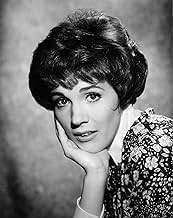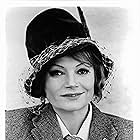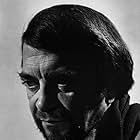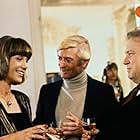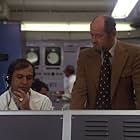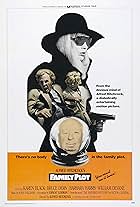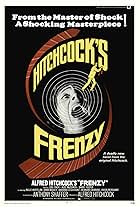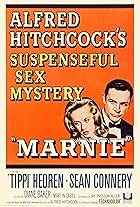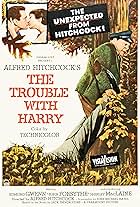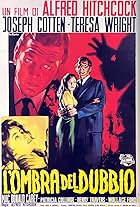VALUTAZIONE IMDb
6,6/10
29.999
LA TUA VALUTAZIONE
Uno scienziato americano diserta pubblicamente per la Germania dell'Est come parte di una missione prima di pianificare una fuga verso l'Occidente.Uno scienziato americano diserta pubblicamente per la Germania dell'Est come parte di una missione prima di pianificare una fuga verso l'Occidente.Uno scienziato americano diserta pubblicamente per la Germania dell'Est come parte di una missione prima di pianificare una fuga verso l'Occidente.
- Premi
- 3 candidature
Hansjörg Felmy
- Heinrich Gerhard
- (as Hansjoerg Felmy)
Gloria Govrin
- Fräulein Mann
- (as Gloria Gorvin)
Elisabeth Alexander
- Bus Passenger
- (non citato nei titoli originali)
Elizabeth Alexander
- Bus Passenger
- (non citato nei titoli originali)
Don Ames
- Theatre Patron
- (non citato nei titoli originali)
Chris Anders
- Blond Aide to Mr. Gerhard
- (non citato nei titoli originali)
Trama
Lo sapevi?
- QuizIn a conversation with François Truffaut, Sir Alfred Hitchcock said that he included the fight scene deliberately to show the audience how difficult it can be to kill a man, because several spy thrillers at the time made killing look effortless.
- BlooperIn East Berlin there are several Volkswagen Käfer / Beetle on the street which is a west German car and definitely not would have been found in east Berlin. The car which they took from the airport to the hotel is a Mercedes Benz, a west German car as well.
- Citazioni
Professor Michael Armstrong: Just give me five minutes with her. After all, she is my girl.
Sarah Sherman: Put that in the past tense.
- Versioni alternativeIn the original version, various German dialogues are translated to English (i.e. at the airport). In the German version, these translations were removed. Additionally, letters written in English were replaced with letters written in German.
- ConnessioniEdited into Terremoto (1974)
Recensione in evidenza
Torn Curtain (1966)
Hitchcock was on an odd path in the 1960s toward more contained and artificial films, beginning in a way with North by Northwest (a masterpiece of control, for sure) but getting overtly stylized in Birds and Marnie. Here, in a bizarre casting choice, we replace the doubtfully capable Tippi Hedron with doubtfully appropriate Julie Andrews, fresh out of The Sound of Music. And of course, there is Paul Newman, who had recently filmed Harper and before that, Hud. A weird mix, and it has its moments. In fact, the chemistry between the two leads in the first scenes is surprising and you might expect or want more of that later on--and you won't get it.
Add to these actors a tense milieu from the time, Cold War defections and the atom bomb, and you have an intriguing basis for making a movie. You can see why he gave it a go. The plot, for what it's worth, is ultimately thin and not convincing (hints of Cloak and Dagger with Gary Cooper way back in 1946) but Newman, at least, pulls off his role as Dr. Armstrong, atomic scientist, with intense restraint. Andrews? She doesn't sing, and there are no children to be seen (except briefly, on Hitchcock's lap in his cameo!), and frankly, sadly, she comes off a little out of her element. But then, her character as Armstrong's assistant is also meant to be a bit out to sea. We don't see too much of her. We do see lots of various bit characters, little known and not very interesting men, mostly, with Swedish or German accents. (I say it that way because they are almost just cardboard props for types of people--you know, those cold hearted Stasi types or the cool and cunning Swedes you can't quite figure out, neither of which is especially true or helpful for the plot.)
Of course, Hitchcock doesn't intend to make this a Cold War commentary. (The Spy Who Came in from the Cold with Richard Burton the previous year is the film to see for that.) Hitchcock uses the East German scene as a backdrop for the suspense of deception, and of ordinary people trying not to get caught, a perennial theme he manages so well. Besides Newman, there is a fabulous small role by the great Soviet actress Lila Kedrova that brings the last half hour to life. In the middle of the movie there is one scene that's totally brilliant and wordless, with Newman and Carolyn Conwell in a farmhouse, and it's worth the ride alone. Don't miss that for the world.
This can't be Hitchcock's or Newman's or Andrews's best movie for a lot of reasons. But it's a very good movie, which is enough for most of us, and an essential for any Hitchcock fan, and a enlightening surprise for anyone who thinks they know Paul Newman and want to see yet more of his impressive range.
Hitchcock was on an odd path in the 1960s toward more contained and artificial films, beginning in a way with North by Northwest (a masterpiece of control, for sure) but getting overtly stylized in Birds and Marnie. Here, in a bizarre casting choice, we replace the doubtfully capable Tippi Hedron with doubtfully appropriate Julie Andrews, fresh out of The Sound of Music. And of course, there is Paul Newman, who had recently filmed Harper and before that, Hud. A weird mix, and it has its moments. In fact, the chemistry between the two leads in the first scenes is surprising and you might expect or want more of that later on--and you won't get it.
Add to these actors a tense milieu from the time, Cold War defections and the atom bomb, and you have an intriguing basis for making a movie. You can see why he gave it a go. The plot, for what it's worth, is ultimately thin and not convincing (hints of Cloak and Dagger with Gary Cooper way back in 1946) but Newman, at least, pulls off his role as Dr. Armstrong, atomic scientist, with intense restraint. Andrews? She doesn't sing, and there are no children to be seen (except briefly, on Hitchcock's lap in his cameo!), and frankly, sadly, she comes off a little out of her element. But then, her character as Armstrong's assistant is also meant to be a bit out to sea. We don't see too much of her. We do see lots of various bit characters, little known and not very interesting men, mostly, with Swedish or German accents. (I say it that way because they are almost just cardboard props for types of people--you know, those cold hearted Stasi types or the cool and cunning Swedes you can't quite figure out, neither of which is especially true or helpful for the plot.)
Of course, Hitchcock doesn't intend to make this a Cold War commentary. (The Spy Who Came in from the Cold with Richard Burton the previous year is the film to see for that.) Hitchcock uses the East German scene as a backdrop for the suspense of deception, and of ordinary people trying not to get caught, a perennial theme he manages so well. Besides Newman, there is a fabulous small role by the great Soviet actress Lila Kedrova that brings the last half hour to life. In the middle of the movie there is one scene that's totally brilliant and wordless, with Newman and Carolyn Conwell in a farmhouse, and it's worth the ride alone. Don't miss that for the world.
This can't be Hitchcock's or Newman's or Andrews's best movie for a lot of reasons. But it's a very good movie, which is enough for most of us, and an essential for any Hitchcock fan, and a enlightening surprise for anyone who thinks they know Paul Newman and want to see yet more of his impressive range.
- secondtake
- 8 ott 2009
- Permalink
I più visti
Accedi per valutare e creare un elenco di titoli salvati per ottenere consigli personalizzati
Dettagli
- Data di uscita
- Paese di origine
- Sito ufficiale
- Lingue
- Celebre anche come
- Torn Curtain
- Luoghi delle riprese
- Hotel d'Angleterre, Copenaghen, Danimarca(Armstrong's hotel in Copenhagen)
- Azienda produttrice
- Vedi altri crediti dell’azienda su IMDbPro
Botteghino
- Budget
- 6.000.000 USD (previsto)
- Lordo in tutto il mondo
- 613 USD
- Tempo di esecuzione2 ore 8 minuti
- Colore
- Proporzioni
- 1.85 : 1
Contribuisci a questa pagina
Suggerisci una modifica o aggiungi i contenuti mancanti

Divario superiore
By what name was Il sipario strappato (1966) officially released in Canada in French?
Rispondi



